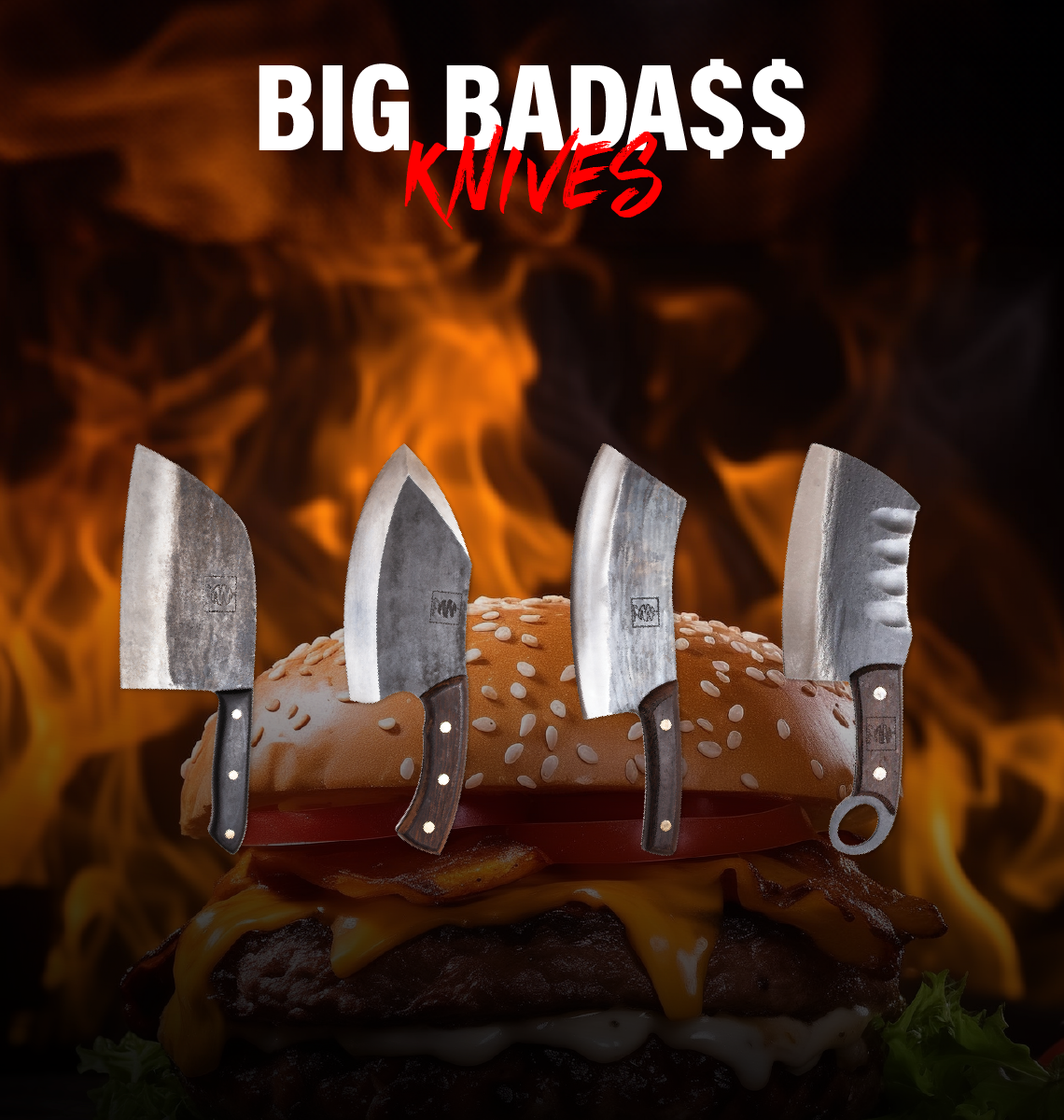The Angle Matters: How to Sharpen Your Knives for Best Performance
Dull knives are a recipe for disaster in the kitchen.
When it comes to cooking, having sharp knives is essential. Not only do dull knives make food prep frustrating, but they can also be dangerous.
Dull blades require more pressure to cut through food, increasing the likelihood of the knife slipping and causing an accident.
Plus, when you use a dull knife, you're more likely to crush your food instead of cutting it cleanly, which can affect the texture and taste of your dishes.
The Secret to Sharp Knives
Let's dive deeper into the secret to keeping your knives sharp!
The angle of your knife's edge is super important for making it sharp and strong.
But how do you know which angle to pick for your knife?
Well, it depends on what kind of knife you have.
Different knives have different purposes and shapes, which means they need different angles.
Here are the most common angles you can choose from:
- 6 degrees: This is a super sharp angle and is best for knives that need to cut through very soft things like tomatoes and citrus fruits. Knives with a 6-degree angle include the filet knife.
- 8 degrees: This angle is also very sharp and is best for knives that need to cut through soft things like vegetables and fish. Knives with an 8-degree angle include the Santoku and Nakiri.
- 10 degrees: This angle is a good balance between sharpness and durability, making it great for all-purpose knives like chef's knives and utility knives.
- 13 degrees: This angle is sharper than a 20-degree angle and is great for filleting fish and cutting through meat. Knives with a 13-degree angle include the slicing and boning knives.
- 15 degrees: This is a very sharp angle and is best for knives that need to cut through soft things like vegetables and fish. Knives with a 15-degree angle include the Santoku and Nakiri.
- 20 degrees: This angle is a good balance between sharpness and durability, making it great for all-purpose knives like chef's knives and utility knives.
- 25 degrees: This angle is not as sharp as the others, but it's strong and great for cutting through tough things like meat and bones. Knives with a 25-degree angle include carving and butcher knives.
So, how do you find out what angle your knife needs?
Well, if you have a Coolina knife, it’s easy; below you will find the angle of each and every one of our knives:
- PROMAJA - 30 degrees
- ALTOMINO HANDMADE CHEF KNIFE - 13-15 degree sharp on both sides
- LIXY™ - Hand-Forged Cleaver Knife - 30 degrees
- ALTOMINO FIXED BLADE KNIFE - 6-8 degrees
- DAOZI - 16-21 degrees
- ALTOMINO HANDMADE BUTCHER KNIFE - 13-15 degrees
- ALTOMINO TUNGSTEN STEEL SLICING KNIFE - 30-40 degrees
- SURATU™ - Chopping Cleaver Knife - 30 degrees
- Machado Butcher Knife - 8-10 degrees
But wait, there's one more thing to consider: the type of steel your knife is made of.
Different steels have different properties and require different angles.
For example, a high-carbon steel knife will need a steeper angle than a stainless steel knife.
So make sure to check what kind of steel your knife has before you start sharpening.
Now that you know the secret to sharp knives, you can pick the right angle for your knife and start sharpening like a pro!
Don't forget to be gentle and keep the same angle while you sharpen, and soon you'll have a knife that's sharp enough to cut through anything.
Tips and Techniques for Perfectly Honed Blades
Once you’re done with determining the angle of your knife, gather your whetstones and get to sharpening!
To sharpen a knife with a 6-degree angle, you'll need to use a sharpening stone with a very fine grit, like 8000.
- Wet the stone with water and place it on a non-slip surface.
- Hold the knife at a 6-degree angle and slowly move it along the stone, applying light pressure.
- Repeat on the other side of the blade until the knife is sharp.
To sharpen a knife with an 8-degree angle, you'll need to use a sharpening stone with a fine grit, like 3000.
- Wet the stone with water and place it on a non-slip surface.
- Hold the knife at an 8-degree angle and slowly move it along the stone, applying light pressure.
- Repeat on the other side of the blade until the knife is sharp.
To sharpen a knife with a 10-degree angle, you'll need to use a sharpening stone with a medium grit, like 1000.
- Wet the stone with water and place it on a non-slip surface.
- Hold the knife at a 10-degree angle and slowly move it along the stone, applying light pressure.
- Repeat on the other side of the blade until the knife is sharp.
To sharpen a knife with a 13-degree angle, you'll need to use a sharpening stone with a fine grit, like 3000.
- Wet the stone with water and place it on a non-slip surface.
- Hold the knife at a 13-degree angle and slowly move it along the stone, applying light pressure.
- Repeat on the other side of the blade until the knife is sharp.
To sharpen a knife with a 20-degree angle, you'll need to use a sharpening stone with a coarse grit, like 400.
- Wet the stone with water and place it on a non-slip surface.
- Hold the knife at a 20-degree angle and slowly move it along the stone, applying light pressure.
- Repeat on the other side of the blade until the knife is sharp.
To sharpen a knife with a 25-degree angle, you'll need to use a sharpening stone with a coarse grit, like 500.
- Wet the stone with water and place it on a non-slip surface.
- Hold the knife at a 25-degree angle and slowly move it along the stone, applying light pressure.
- Repeat on the other side of the blade until the knife is sharp.






Be the first to comment